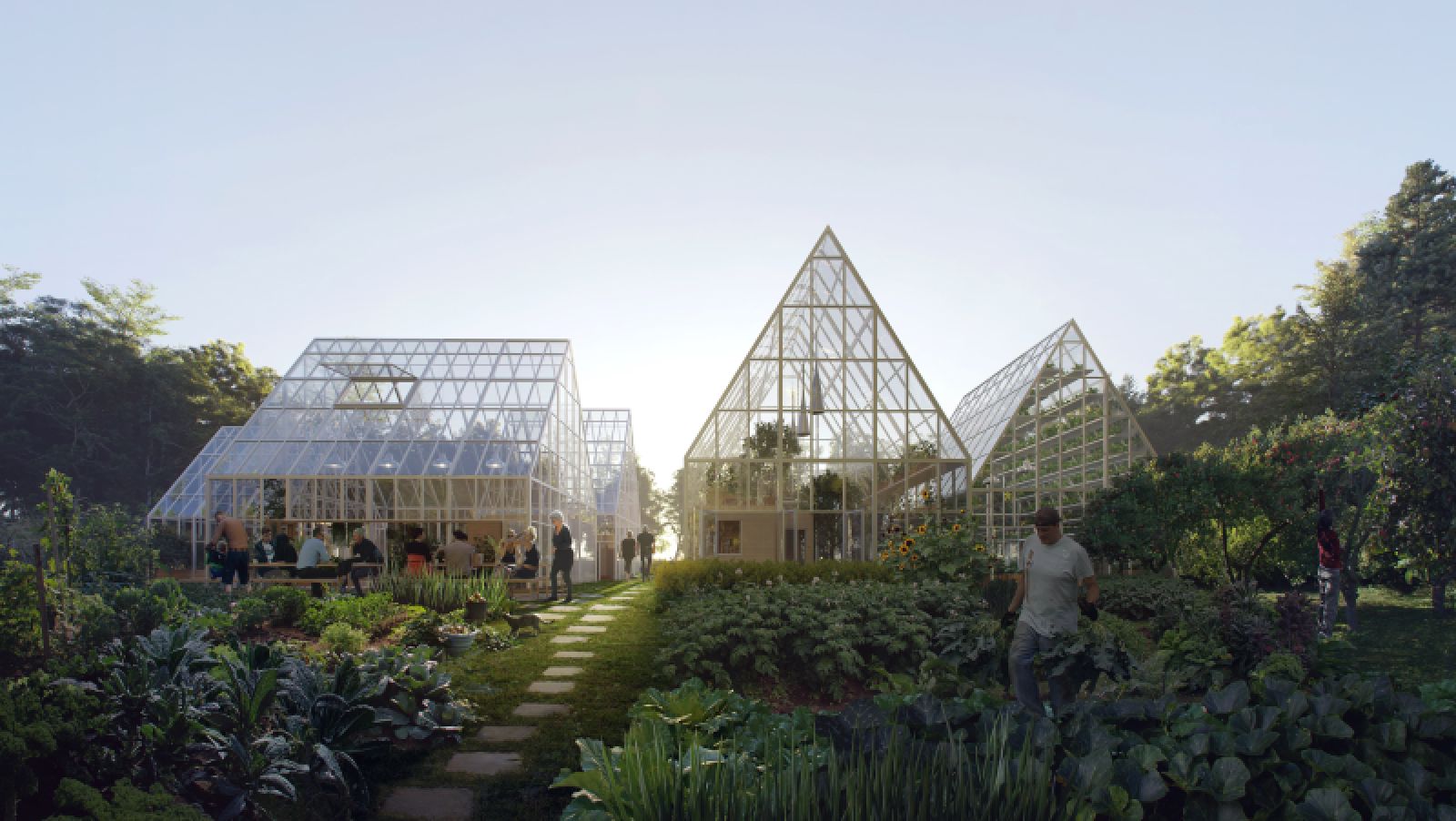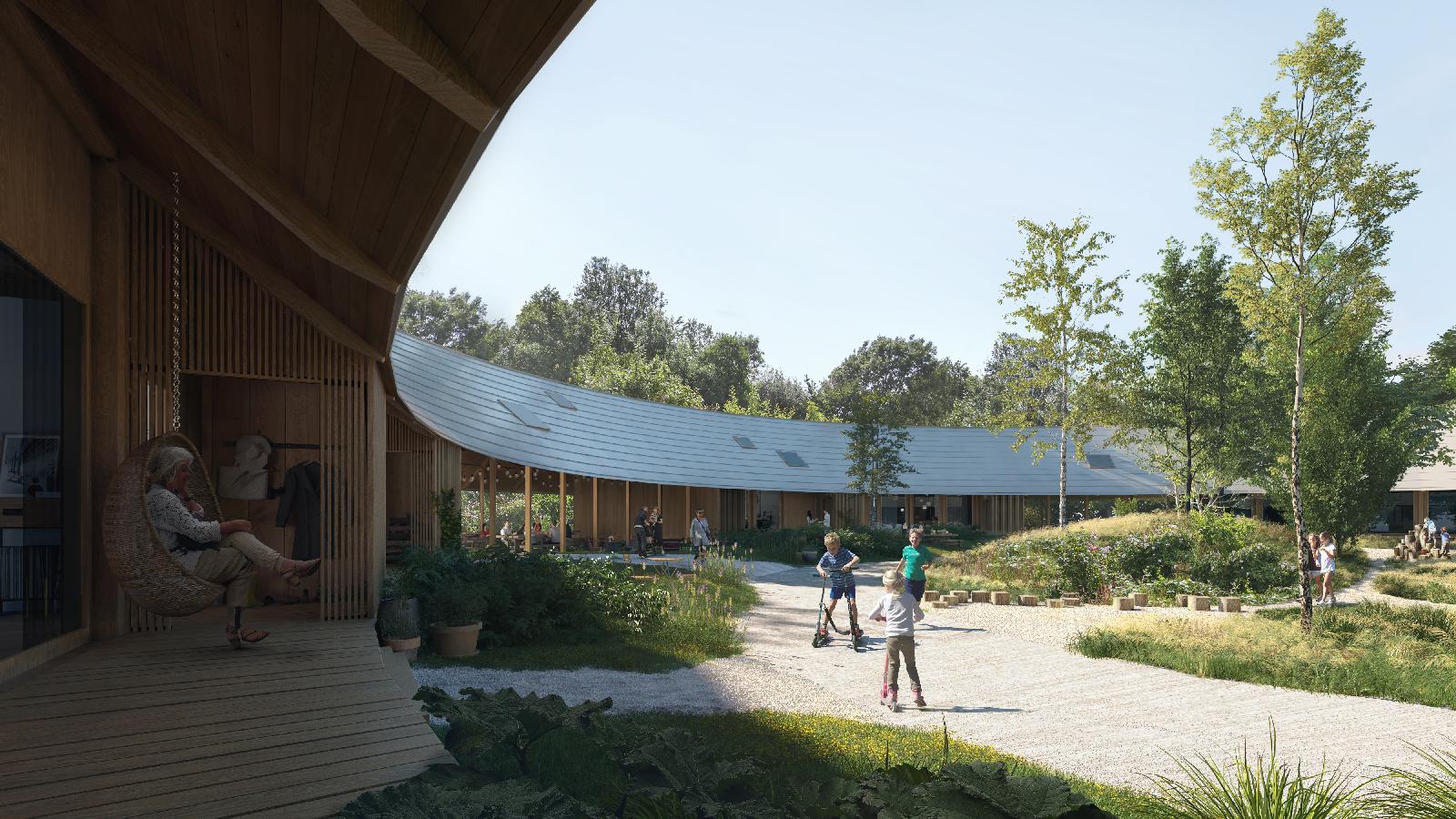With the project ‘Naturbyen’ (translated Nature Village), the Municipality of Middelfart in collaboration with EFFEKT has planned a new residential area, which will be an international demonstration project for how sustainable housing development can be combined with ambitious afforestation, increased biodiversity, and circular resource thinking in the suburban and peri-urban areas. And as a bi-product create healthy and socially connected neighborhoods.
A vision routed in agricultural soil
A bare agricultural field in the eastern part of Middelfart will soon be transformed into a completely new forest-neighborhood district. A cluster of small communities that put environment, biodiversity and sharing of resources at the forefront. A total of 220 new homes located in a newly planted forest will offer an alternative to traditional parcel- and row housing options which is still the predominant form of housing in Denmark, outside the major cities.
Nature is under pressure
The Danish government proposes a climate plan which, among other things, aim to increase biodiversity and create more forest in Denmark. In this context, the National Forest Program has set a national target that at least 20% of Denmark’s total area must be covered by forest by the year 2100 (against approx. 14% today). Middelfart Municipality support this goal and Naturbyen is a direct solution on where some of this new forest can be located – joining human and natural habitats.
The landscape first
To kick off the project the agricultural land is prepared and restored through natural succession using a series of well-established methodologies. Based on interviews with industry experts working with afforestation in the Nordics – Anders Busse Nielsen and Björn Wiström – both experts that have years of hands-on experience with design and management of urban vegetation and forests. The effect of a dense planting scheme with the nutrient rich agricultural soil greatly accelerates the establishment of the woodland, which can take as little as 15 years.
Far below compared to the 100-200 years it would take when relying on natural succession. The initial planting is very dense and creates an optimal micro-climate that stimulates growth. After the first years of growth, the trees are progressively thinned out and new sub-layers of vegetation are planted to retain the optimal micro-climate and increase biodiversity within the system. This method is based on best practices within the field of forestry.
An edible forest
The new forest will be prioritizing edible crops such as fruits, nuts, root vegetables, mushrooms, etc. so future residents can use the forest not only for recreational purposes but also as a source for nutrients. Similarly, local composting and small livestock will enable residents to nurture the forest.

Image © EFFEKT
A framework for community
Naturbyen is planned around the exact same density as the surrounding parcel-house neighborhoods. In Naturbyen, however, the homes are arranged in clusters of 15-25 houses around a shared courtyard. Each home has direct access to smaller, private terraces – one located towards the courtyard and one towards the forest. The landscape and the spaces between the houses are shared between the residents and intended for recreational and social purposes.
Differentiated housing typologies
The new district is divided into several individual clusters. To ensure a good mix of residents, a high variety of housing offers and ownership models is proposed. The various clusters allow for a differentiated development of housing types, community forms, forms of ownership and architecture, to create a diversebreeding ground for a broad composition of resident communities.
Natural materials and energy efficient construction
The philosophy behind Naturbyen is to build and live with a small footprint in simple homes with high quality and functionality. By optimizing the home and use of square meters through intelligent and flexible design, residents can save money, energy and CO2 immisions, while freeing up space for biodiversity and the natural environment. The homes will be built from natural and recyclable materials with a main focus on timber.
A climate-positive district
With the nature city, Middelfart Municipality strives to create a CO2-negative solution for future housing supply. This can only be achieved by a combination of CO2 storage through afforestation, CO2 storage in materials (wood and biomass) as well as through the energy communities (smart grids) that are established across the housing clusters, which distribute the excess energy production between the homes and lead excess energy back to the energy grid. Source by EFFEKT.






